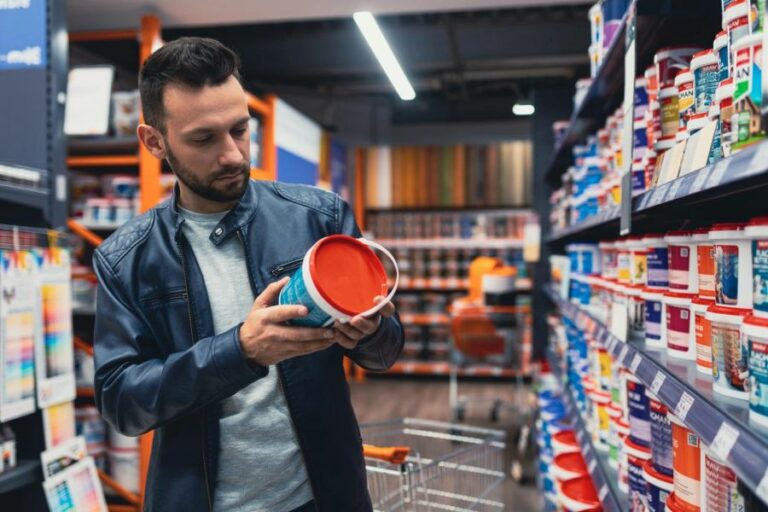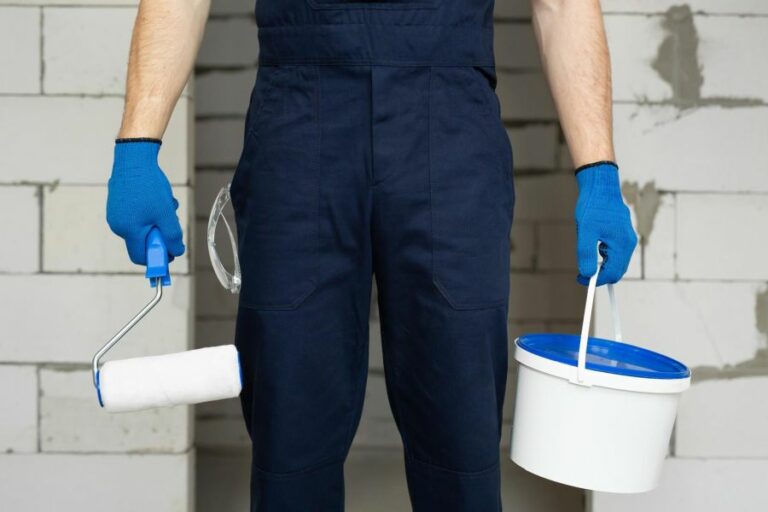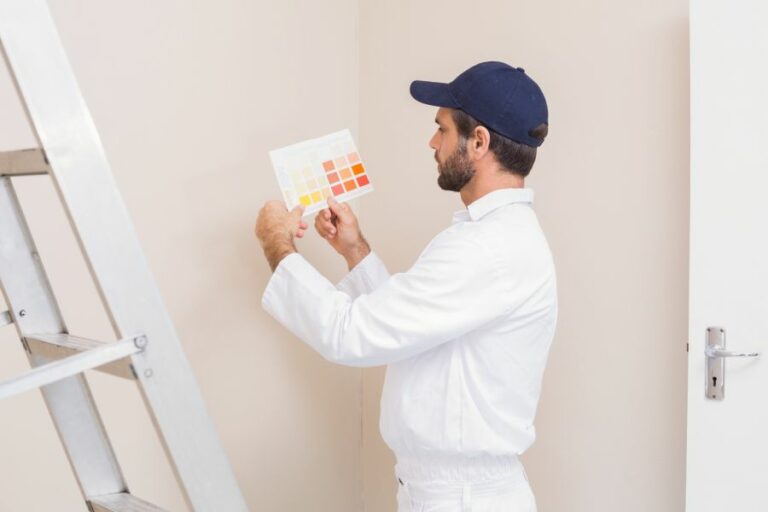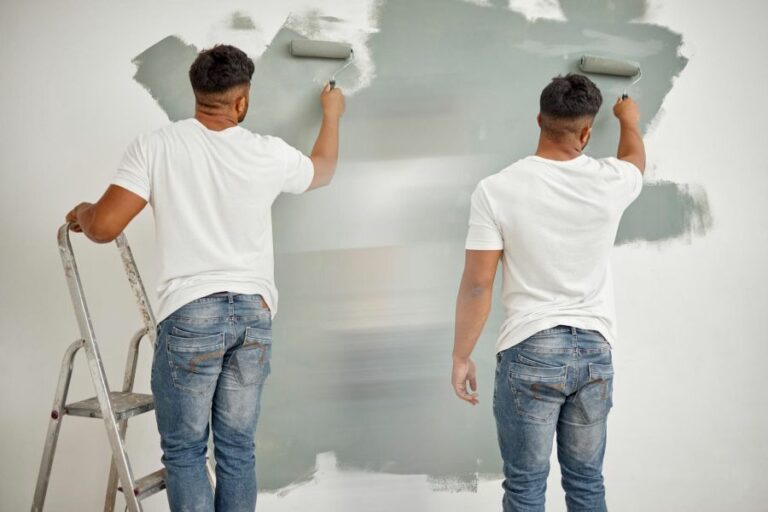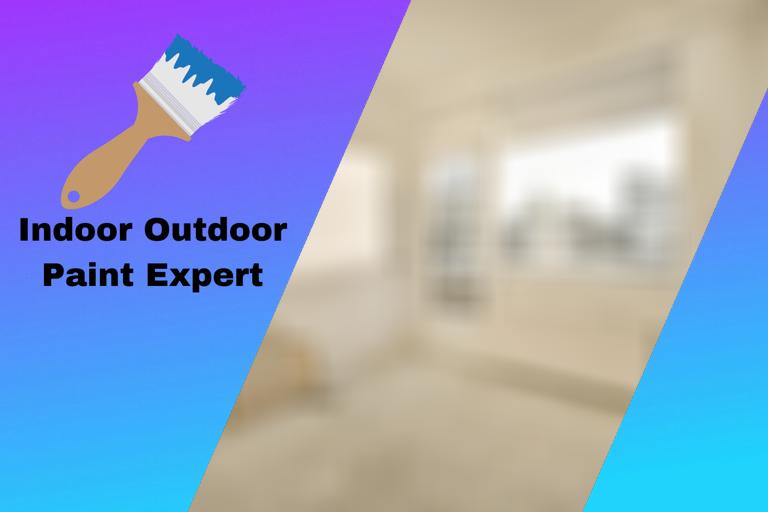Textured Wall Paint For Indoors – Specific. What Pros Say
Are you looking to breathe new life into your home’s interior with a fresh and eye-catching look? Textured wall paint might be your answer, providing a unique and stylish finish inside your living space. Fear not, as I have delved into the specifics of textured wall paint for indoors, ensuring you can confidently make the best decision for your home.
Textured wall paint for indoors – specific:
Textured wall paint indoors is popular for enhancing visual appeal, camouflaging imperfections, and improving sound insulation in interior spaces. It is available in various texture options and paint types, such as premixed textured paint and texture additives. To apply textured wall paint, clean and prepare the walls, mix the paint, apply evenly using a roller, create the desired texture with appropriate tools, and allow the paint to dry completely.

Excited to learn about textured wall paint specifically designed for indoor use? Read on to discover its benefits, application techniques, and how it can add depth and character to your walls. Don’t miss out on these expert tips!
Contents
- 1 Indoor Textured Wall Paint: A Detailed Guide
- 2 Utilizing Textured Paint for Interior Spaces
- 3 Choosing the Ideal Interior Wall Texture Paint
- 4 Discover Wall Paints with Built-In Texture
- 5 Selecting the Right Paint for Textured Interior Walls
Indoor Textured Wall Paint: A Detailed Guide
Textured wall paint is a popular choice for many homeowners looking to add dimension and visual interest to their indoor spaces. This type of paint features additives that create rough, tactile surfaces upon drying, simulating various textures such as stucco, sand, or plaster.
• Benefits of Using Textured Wall Paint Indoors
There are several reasons why you might choose to use textured wall paint in your home:
– Camouflaging Imperfections
Textured paint can help hide imperfections in walls, such as cracks or uneven surfaces, by creating a thicker, more forgiving layer of paint. This comes in handy when dealing with older walls that may have suffered wear and tear over time.
– Adding Visual Interest
Textured paint can add an intriguing aesthetic appeal to your walls, transforming a plain room into a more captivating space. This can make a significant impact in areas where you want to create an exciting environment, such as an accent wall or a main living space.
– Enhancing Sound Insulation
Due to their thicker consistency, textured paints can help absorb sound, enhancing the acoustics within a room. This can be particularly beneficial for spaces that require a quieter atmosphere, such as bedrooms or home offices.
• Selecting the Right Texture and Paint Type
When shopping for textured wall paint, you will encounter various options for both textures and paint types:
– Common Textures
- Sand: Gives walls a fine, gritty texture that looks like coarse sandpaper.
- Popcorn: Features a thick, bumpy texture reminiscent of popcorn ceilings.
- Knockdown: Mimics the look of traditional stucco with a rough, irregular surface.
- Venetian plaster: Creates a polished, marble-like effect.
It’s essential to consider your desired outcome and the overall style of your interior space when selecting a texture.
– Paint Types
The two common types of paint used for creating texture are premixed textured paint and texture additives.
- Premixed textured paint: As the name suggests, these paints come with the texture already mixed in, making them convenient and easy to use. However, they may be limited in terms of the range of textures offered.
- Texture additives: These are substances that you can add to your regular paint to create your desired texture. This option allows for greater customization but requires some knowledge of paint mixing ratios.
• Preparing Your Walls for Textured Paint
Before applying textured wall paint, it’s crucial to properly prepare your walls to ensure the best results. Here are the steps to prepare your walls:
- Clean the walls: Remove any dust, dirt, or grime using mild detergent and water. Allow the walls to dry completely before proceeding.
- Repair any damage: Fill any cracks or holes with a filler or plaster, then sand the surface until it’s smooth.
- Apply a primer: A primer will help with paint adhesion and can help reduce the number of coats needed for even coverage.
• How to Apply Textured Wall Paint
Once your walls are prepared, follow these steps to apply textured wall paint:
- Gather your tools: You will need a roller, paintbrush, and any specific tools for applying the desired texture, such as a trowel or a sponge. Make sure to use a roller with a suitable nap length for your chosen texture; the thicker the texture, the longer the nap length should be.
- Mix the paint: If using a texture additive, follow the manufacturer’s instructions to mix the appropriate ratio of paint and additive.
- Apply the paint: Use a roller to apply the paint in even coats, following the manufacturer’s instructions for the proper application technique for your chosen texture.
- Create the texture: After applying the paint, use your chosen tool to create the desired texture pattern on the wall. Work quickly, as some textured paints may dry fast.
- Allow the paint to dry: Give the paint enough time to dry completely before making any touchups or applying additional coats. This may take longer than regular paint, depending on the texture type.
• Tips for Successful Textured Wall Paint Application
To ensure the best results when applying textured wall paint, consider the following tips:
- Test samples: Before committing to a particular texture and paint type, test a small sample on your wall to ensure you like the result.
- Work in small sections: It’s best to work in small areas (approximately 3 to 4 feet wide) to prevent the paint from drying too quickly and affecting the desired texture.
- Practice your application technique: If you’re new to applying textured paint, practice on a spare piece of drywall or cardboard to get the hang of the application technique before working on your walls.
For more information and guidance on applying textured wall paint, consider visiting the Paint Quality Institute’s website, which offers a wealth of resources on paint and painting techniques.
By selecting the right texture and paint type for your desired outcome and following the proper preparation and application steps, you can effectively transform your indoor space with textured wall paint.
Not only will this add visual interest, but it can also help improve the functionality of your space by camouflaging imperfections and enhancing sound insulation.
Utilizing Textured Paint for Interior Spaces
• What is Textured Paint?
Textured paint is a type of paint that contains additional materials to create a distinct texture on a surface. These materials can include sand, stone, or other particles that provide a rough or uneven finish.
Textured paint is commonly used on exterior surfaces, such as walls and ceilings, but can also be applied indoors for decorative purposes.
• Advantages of Textured Paint
– Aesthetic Appeal
One of the primary reasons to use textured paint indoors is to add visual interest to a room. Textured paint can create a unique, dimensional appearance on walls, giving your space a distinctive look.
This can be particularly effective in livening up a plain or dull room and can be tailored to match your desired style, whether rustic, modern or somewhere in between.
– Hiding Imperfections
Textured paint has the ability to mask small imperfections in walls, such as slight cracks, dents, or uneven patches. The texture it creates can help to camouflage these minor flaws, giving the surface a more refined and polished appearance.
This can be a convenient solution if you want to avoid the time-consuming process of repairing these imperfections before painting.
– Sound Absorption
The added texture of this type of paint can also help to absorb and dampen sound, making your living space quieter and more comfortable. This can be particularly beneficial in spaces such as bedrooms or living rooms, where unwanted noise can disrupt your relaxation.
• Types of Textured Paint
– Premixed Textured Paint
Premixed textured paint is a convenient option for those looking for a straightforward way to apply texture to their walls. This type of paint is already mixed with the necessary additives to create a textured finish, allowing you to apply it directly from the can without any need for additional preparation.
– Smooth Textured Paint
Smooth textured paint is a paint that provides a slightly textured, but still relatively smooth, finish. This type of paint is ideal for those who want to incorporate a subtle texture into their space without the rough feel of other textured paint varieties.
Smooth textured paint is often used to mimic the appearance of materials such as plaster, stucco, or concrete.
– Coarse Textured Paint
Coarse textured paint is a paint that provides a more prominent and rough texture, with larger particles incorporated into the paint.
This type of paint is often used to create a rustic or industrial aesthetic and can be particularly effective on large, blank walls where the texture can become the focal point of the room.
• Applying Textured Paint Indoors
When using textured paint indoors, it is essential to prepare the surface and area properly. Ensure the walls are clean, dry, and free from dirt or grease. If there are any significant cracks or dents in the wall, these should be filled and sanded smooth before applying the paint.
Before you begin painting, protect your floors, furniture, and trim with drop cloths and painter’s tape. It’s also essential to ensure proper ventilation during the application process, as the added particles in textured paint may produce more fumes than regular paint.
When applying the textured paint, use a thick-nap roller or a brush specifically designed for textured paint. Apply the paint in even, overlapping strokes, working in small sections to ensure a consistent finish. Multiple coats may be necessary to achieve your desired level of texture.
In some cases, you may wish to add additional texture to the paint with a technique called “texturing.” For example, after applying the initial coat of paint, you can use a trowel, sponge, or another tool to create specific patterns or effects.
Experiment with different tools and techniques on a test piece of wood or cardboard before applying them to your walls.
• Conclusion
Textured paint can be a versatile and creative choice for adding depth and interest to your indoor spaces. With various finishes available and the ability to customize the texture, bringing this unique style into your home can be an enjoyable DIY project.
Consider your desired aesthetic, the type of texture, and the proper application techniques to enhance your indoor space with textured paint.
| Can you use textured paint indoors? |
|---|
| Yes, textured paint can be used indoors. It is designed to add depth and texture to walls, ceilings, and other surfaces. However, it is important to follow the manufacturer’s instructions for proper application and safety precautions. |
Choosing the Ideal Interior Wall Texture Paint
As a professional with years of experience in the paint industry, I understand that choosing the right paint texture for your interior walls is crucial for achieving a polished and appealing finish. The right texture can enhance the overall aesthetic, and it can also help hide imperfections on the surface.
• Flat and Matte Paints: The Classic Choice
Flat and matte paints have very little or no sheen to them, making them a popular choice for a simple, clean finish. These textures easily hide imperfections on walls and are a great option for low-traffic areas like bedrooms and living rooms.
Flat and matte finishes are also ideal for ceilings, as they do not reflect light, giving a sense of uniformity.
However, flat and matte finishes are less durable compared to other paint textures, and they can be challenging to clean. If wall stains or marks are a concern, you may want to consider a different paint texture for high-traffic areas or areas prone to dirt and grime.
I recommend: Consider a flat or matte finish for bedrooms, living rooms, and ceilings where the focus is on a clean, uniform appearance.
• Eggshell and Satin: A Balance of Sheen and Durability
Eggshell and satin finishes strike a balance between sheen and durability, making them suitable for a broad range of applications.
These finishes have a slight sheen to them without being a high gloss, which adds a refined quality to the walls. The enhanced durability of these paint textures makes them an excellent option for high-traffic areas.
Eggshell and satin finishes can be easily cleaned, as they are more resistant to stains and marks. These finishes are a great option for dining rooms, kitchens, family rooms, and children’s bedrooms, where increased foot traffic and messes may be more common.
I recommend: Utilize eggshell or satin finishes in areas that require a touch of elegance or where you need added durability and stain resistance.
• Semigloss and Gloss Paints: Shine and Durability
Semigloss and gloss paints boast a higher level of sheen compared to other paint textures, made possible by the higher levels of resin in the paint formula. This characteristic provides a luxurious shine to the walls, which can make a room feel more spacious and bright.
Semigloss and gloss finishes are incredibly durable and easy to clean, making them ideal for high-wear areas like kitchens, bathrooms, and hallways. They are also a popular choice for baseboards, doors, and trim, where scuff marks can be prevalent.
However, glossy finishes tend to highlight imperfections on the wall surface. Ensure proper wall preparation, like sanding and priming, is done before applying semigloss or gloss paints for a flawless finish.
I recommend: For high-wear areas or surfaces where a shiny, reflective finish is desired, choose semi-gloss or gloss finishes.
• Textured Paints: Adding Dimension and Interest
Textured paints are specially formulated to create distinctive patterns or textures on the wall surface. These paints can add a sense of depth and visual interest to any room. There are numerous options for textured paint finishes, from brushed-on techniques to sand-like textures.
Some benefits of textured paints include the ability to conceal imperfections or repair work on walls and the potential to add a unique style to a space. Textured paint finishes are often seen on feature walls, like in dining rooms or living spaces, providing an impactful focal point.
I recommend: When looking to create a one-of-a-kind space or to camouflage imperfections on the wall, consider textured paints as an innovative and stylish option.
• Final Thoughts and Recommendations
The best paint texture for your interior walls largely depends on the room’s function, the desired aesthetic, and the condition of the walls. Every homeowner or professional painter should carefully consider the specific room requirements before choosing a paint texture.
As a general recommendation, flat and matte finishes work best in low-traffic spaces focused on simplicity, while eggshell and satin are suited for medium-traffic areas requiring elegance and easy maintenance.
Semigloss and gloss options are perfect for high-wear areas or spaces where a reflective finish is desired. Lastly, textured paints are excellent options for providing uniqueness and visual interest to your spaces.
For further information on paint textures and finishes, Sherwin-Williams provides an informative guide that covers various paint characteristics to help you make the best decision for your interior walls.
Type | Advantages | Disadvantages |
|---|---|---|
Flat | Hides imperfections, easy to touch up | Not very washable |
Eggshell | Low-sheen look, washable | Shows some imperfections |
Satin | Smooth finish, easy to clean | Shows brush strokes, may reveal wall imperfections |
Low-Luster | Subtle sheen, good washability | Not ideal for walls with many imperfections |
Semi-Gloss | Highly washable, good for kitchens and bathrooms | Shiny appearance may show imperfections |
Gloss | Highly reflective, durable finish | Not recommended for walls with imperfections, can be too shiny for interior walls |
Discover Wall Paints with Built-In Texture
Texture is a powerful design tool that can transform a plain wall into a captivating piece of art.
• What is Textured Wall Paint?
Textured wall paint is a type of paint that contains granules or additives, such as sand, pumice, or perlite, which create a textured finish. This unique finish sets it apart from standard, smooth wall paints and can enhance the overall ambiance of a space.
– Types of Textured Wall Paint
There are several types of textured wall paints available on the market, suitable for various preferences and applications.
Sand-based Texture Paint
Sand-based texture paint is a popular choice for creating a subtle, rough texture that adds depth to walls. It contains small sand particles, which give it a gritty finish. This type of paint is suitable for interior and exterior surfaces and is easy to apply using either a roller or a brush.
Premixed Texture Paint
Premixed texture paint contains additives, such as perlite, vermiculite, or pumice, suspended in a base paint. This type of paint is easy to apply and requires minimal preparation, making it a convenient option for those seeking a simple solution for adding texture to walls.
Paint Additives
For those who wish to customize the texture of their paint, paint additives can be purchased separately and mixed into standard wall paint.
This option allows for greater control over the final texture and appearance, making it a popular choice among DIY enthusiasts and professionals alike The National Institute of Painting and Decorating provides more information on the types of additives available and their benefits.
– Advantages of Textured Wall Paint
In addition to its aesthetic appeal, textured wall paint offers several practical benefits:
- Durability: Textured paint is thicker than traditional paint, which makes it more resistant to scuffs, scratches, and other surface damage. This can be particularly helpful in areas with high foot traffic or in homes with children and pets.
- Covering Imperfections: The textured nature of the paint helps to conceal minor imperfections, such as cracks or uneven surfaces, providing a more polished appearance without extensive prep work.
- Improved Insulation: Textured paint can act as an additional layer of insulation, helping to maintain the temperature inside your home and potentially reducing energy costs.
- Moisture Resistance: Some textured paints are designed to repel moisture, making them an excellent choice for humid environments or areas prone to water damage, such as bathrooms and kitchens.
• Tips for Choosing the Right Textured Wall Paint
Before selecting a textured wall paint, consider the following factors:
1. Desired Texture
Identify the specific texture that will best complement your space, whether that be a subtle, sand-based texture or a more pronounced pattern achieved through paint additives.
2. Color Compatibility
Consider the paint color in conjunction with the texture, as the finish can affect the overall appearance of the hue. For example, dark-colored textured paint might appear even darker due to the shadows created by the texture.
3. Application Method
Depending on the type of textured paint you choose, different application methods may be required. Some textured paints can be rolled on, while others require specialized tools or techniques. Ensure you are comfortable with the application process before committing to a particular product.
4. Surface Preparation
While textured paint is adept at concealing minor imperfections, significant surface damage or unevenness may necessitate additional prep work, such as patching or sanding, to achieve the desired results.
• How to Apply Textured Wall Paint
To achieve professional-looking results, follow these general guidelines:
- Prepare the Surface: Clean the walls thoroughly, repair any damage or imperfections, and prime if necessary.
- Stir the Paint: Ensure that the paint is well-mixed, especially if it contains additives, to avoid uneven texture distribution.
- Apply the Paint: Use a roller, brush, or other appropriate tools to apply the paint in even strokes, following the manufacturer’s instructions.
- Create the Texture: Depending on the product, you may need to use specialized techniques, such as stippling, to achieve the desired texture.
- Allow to Dry: Texture paint, due to its thickness, may require a longer drying time than standard paint. Follow the manufacturer’s guidelines for recommended drying times.
In conclusion, textured wall paint is an excellent option for those seeking to add character and depth to their interior spaces. By selecting the right type of paint, color, and application method, you can achieve stunning results that will enhance the ambiance of your home or project.
Selecting the Right Paint for Textured Interior Walls
Textured walls are becoming increasingly popular in modern homes as they add a unique appeal and flair to interior spaces. They come in various patterns and textures, ranging from knockdown, orange peel, to popcorn, creating a visually dynamic look.
Whenever you need to repaint these walls, one question that may come to mind is: do I need special paint for textured walls? The answer is not as simple as yes or no, as it depends on a few factors, including the texture type and desired finish.
• Understanding Textures and Paint
Before diving into paint selection, it’s essential to understand the various types of textures, as well as the different types of paint available. Some common wall textures include:
- Knockdown: This texture is achieved by spraying a joint compound on the walls using a specialized spray gun, followed by knocking it down with a trowel to create a distinctive mottled look.
- Orange peel: This texture resembles the skin of an orange and is typically achieved by spraying a diluted joint compound or a specialized texture mixture.
- Popcorn: This texture consists of clumps of material on the surface, giving it a unique popcorn-like appearance. It is commonly used on ceilings, though it may also appear on walls in some homes.
On the other hand, different types of paint and finishes include:
- Flat/matte: This type of paint does not reflect light, making it an ideal choice for hiding imperfections and surrounding space with an even, calm color.
- Eggshell: Slightly more reflective than matte, eggshell paint sheens give off a subtle, velvety appearance and are suitable for relatively low-traffic areas.
- Satin: Slightly glossier than eggshell, satin finishes create a smoother, more elegant appearance and are suitable for high-traffic areas such as kitchens and bathrooms.
- Semi-gloss: This type of paint sheen creates a radiant, somewhat reflective appearance and is best for areas exposed to moisture or constant wear, such as trim and bathroom walls.
- Gloss: This type of paint sheen is highly reflective and is best suited for trim, cabinets, and doors.
• Paint Selection for Textured Walls
– Choose the Right Type of Paint
When it comes to textured walls, you don’t necessarily need a specific type of paint. However, some paint types are better suited for specific textures. A flat or matte finish is generally recommended for most textured walls, as it can help hide imperfections and even out the surface.
The Paint Quality Institute recommends using high-quality, 100% acrylic latex paint, regardless of the type of texture, for the best results. These paints provide excellent durability, adhesion, and flexibility, which is essential for textured surfaces.
– Consider the Level of Sheen
The sheen plays a vital role in choosing the right paint for textured walls. A high-gloss sheen can accentuate the texture by reflecting light and creating a visually appealing appearance.
However, it may also highlight imperfections, making it less suitable for spaces where the wall surface is less than perfect.
On the other hand, a matte finish can help disguise imperfections and create a more uniform appearance. It’s generally a better option for textured walls, particularly in high-traffic areas or spaces where the texture may be subject to wear and tear.
In some cases, homeowners may opt for a semi-gloss or satin finish to strike a balance between reflecting light and concealing imperfections.
– Consider the Color
Color plays a crucial role in enhancing the overall look of textured walls. Lighter colors tend to accentuate the texture, while darker colors may create a more subtle effect.
Depending on the desired outcome, consider testing a few colors on a small section of the wall to observe how they interact with the texture and the lighting in the room.
• Preparing Textured Walls for Painting
Regardless of the paint you choose, proper preparation of the textured walls is essential for a successful painting project. Here are some useful tips to help you prepare the surface:
- Clean the walls: Use a vacuum cleaner or a soft brush to remove dust and debris from the surface. For stubborn dirt or stains, use a damp cloth or sponge with mild detergent to gently clean the area.
- Repair any damaged areas: Inspect the walls for any cracks, holes, or other damages that may need repair before painting. Use a joint compound or a patching material to repair the damaged areas, and be sure to smooth it out to match the surrounding texture.
- Prime the walls: Apply a high-quality primer to the walls, focusing on any areas where repairs were made. Priming is crucial on textured walls, as it helps to create a uniform surface for the paint to adhere to and ensures even color distribution.
• Painting Techniques for Textured Walls
When it comes to painting textured walls, using the right tools and techniques is crucial for a professional-looking result. Here are some techniques to ensure a successful paint job:
- Use a thick-nap roller: A thick-nap roller is designed to penetrate the texture and help the paint reach every nook and cranny of the surface. A 3/4″ or thicker nap roller is recommended for most textured walls.
- Consider using a paint sprayer: A paint sprayer can be an efficient and effective option for covering large textured surfaces, particularly in cases of extensive texture or heavy patterns.
- Apply multiple thin coats: Applying thin, even coats of paint can help ensure consistent and uniform coverage. Allow adequate drying time between each coat, based on the paint manufacturer’s instructions.
In conclusion, while you don’t necessarily need a special type of paint for textured walls, certain factors, such as the desired finish, sheen, and color, should be considered for the best results. Furthermore, proper preparation and painting techniques are essential for a successful and attractive outcome.
With the right tools, paint, and approach, textured walls can be easily transformed into a striking feature in your home.

